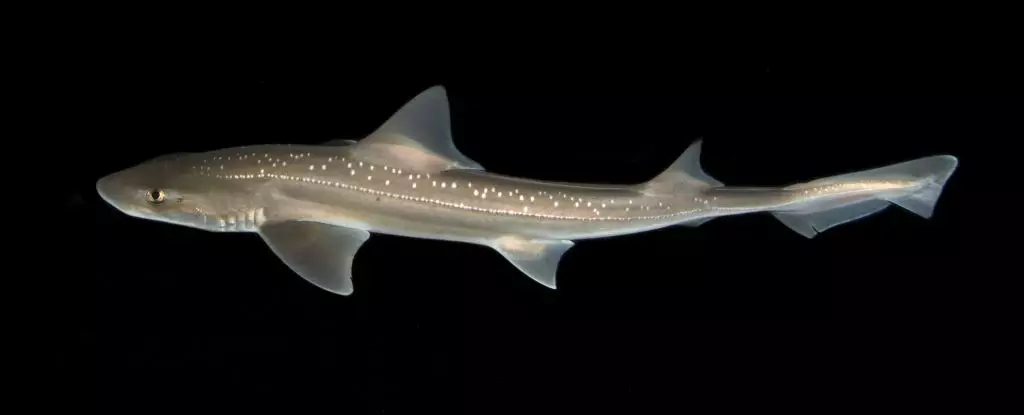For centuries, sharks have haunted the collective imagination as emblematic of fear and danger in the ocean. Known for their stealth, power, and, perhaps most hauntingly, their silence, these apex predators have developed an unsettling mystique. Despite the deeply entrenched narrative around them being muted hunters, recent scientific revelations have forced us to reassess this perception. A groundbreaking study uncovered that certain species of sharks, specifically the rigs (Mustelus lenticulatus), are capable of producing noise. This revelation not only challenges the traditional view of sharks’ communication but also begins to unravel the intriguing complexities of their behavior, interactions, and the oceanic ecosystem itself.
The Science of Sound Underwater
The study of sound production in marine life introduces a wealth of possibilities for understanding sharks. Sound travels extraordinarily well underwater, and many marine animals have evolved various mechanisms to communicate through sound. For instance, fish employ techniques ranging from specialized muscle contractions to stridulation, where they scrape surfaces against one another, generating noises that carry for miles. Surprisingly, elasmobranchs—this group that encompasses sharks and rays—were previously thought to lack any specialized structures for sound production. The recent discovery that rigs can emit distinct clicking sounds opens the door to further exploration of this family of cartilaginous fish; it raises questions about potential mechanisms, purposes, and the reef dynamics around these vocalizations.
Behavioral Insights from Experiments
A critical aspect of this research focused on behavioral insights gathered through experimental protocols. Between May 2021 and April 2022, scientists recorded juvenile rigs in controlled settings, leading to astonishing discoveries. The sharks produced clicks—loud and startling noises—while being handled by researchers, yet soundlessly swam around freely. The timing of the clicks suggested a remarkable possibility: these sounds may serve as distress signals. Initial excitement quickly gave way to a lull as sharks adjusted to handling, indicating that these vocalizations are not merely ambient but could be part of a rich tapestry of communication cues among sharks, potentially alerting others to danger.
Exploring the Mechanism Behind the Clicks
The mechanics behind the clicking sounds have intrigued researchers. Initial hypotheses suggest that rigs might create this sound by rapidly snapping their jaws together, utilizing the force of their teeth to produce a sharp, percussive note. While this theory aligns with anecdotal experiences of similar sounds reported in the field, confirming it requires more systematic investigation. The critical question remains: what do these clicking sounds signify? Is it a startle response elicited by perceived threats, or a communicative tool to interact with other species? Each possibility opens up intriguing dimensions for both behavioral biology and ecological interactions, particularly regarding how these sharks navigate their environments and respond to predators.
Can Sharks Hear Themselves? The Communication Conundrum
One of the most unanswered questions in shark communication is whether they can perceive the sounds they create. If sharks are incapable of hearing their own clicks, it would suggest this phenomenon is incidental, a byproduct of their reaction to stress. However, if they possess the ability to hear these sounds, our understanding of their social structure and instinctual behaviors must evolve. For example, the clicking could serve as a unique identifier amongst fish schools, allowing them to coordinate or orient themselves in turbulent waters or densely populated reefs.
The Implications for Marine Ecosystems
These new insights into shark communication reverberate beyond the confines of academic interest; they challenge how we perceive ocean dynamics and predatory behaviors. Sharks play a crucial role in maintaining the balance of marine ecosystems, and understanding their communication can illuminate their interactions with both prey and other marine species. Acknowledging that these creatures possess a method of signaling not only enhances our appreciation of their behavior but also brings forth ethical considerations regarding their conservation. How often do humans devalue the intricacies of animal lives just because we lack complete understanding? The reality that our perception of sharks may have been built on misconceptions reveals an urgent need for comprehensive approaches toward marine conservation efforts.
In an era increasingly bombarded with environmental crises, reshaping our understanding of marine life, particularly misunderstood creatures like sharks, may be one of the significant steps toward fostering a healthier coexistence with our oceans.


Leave a Reply